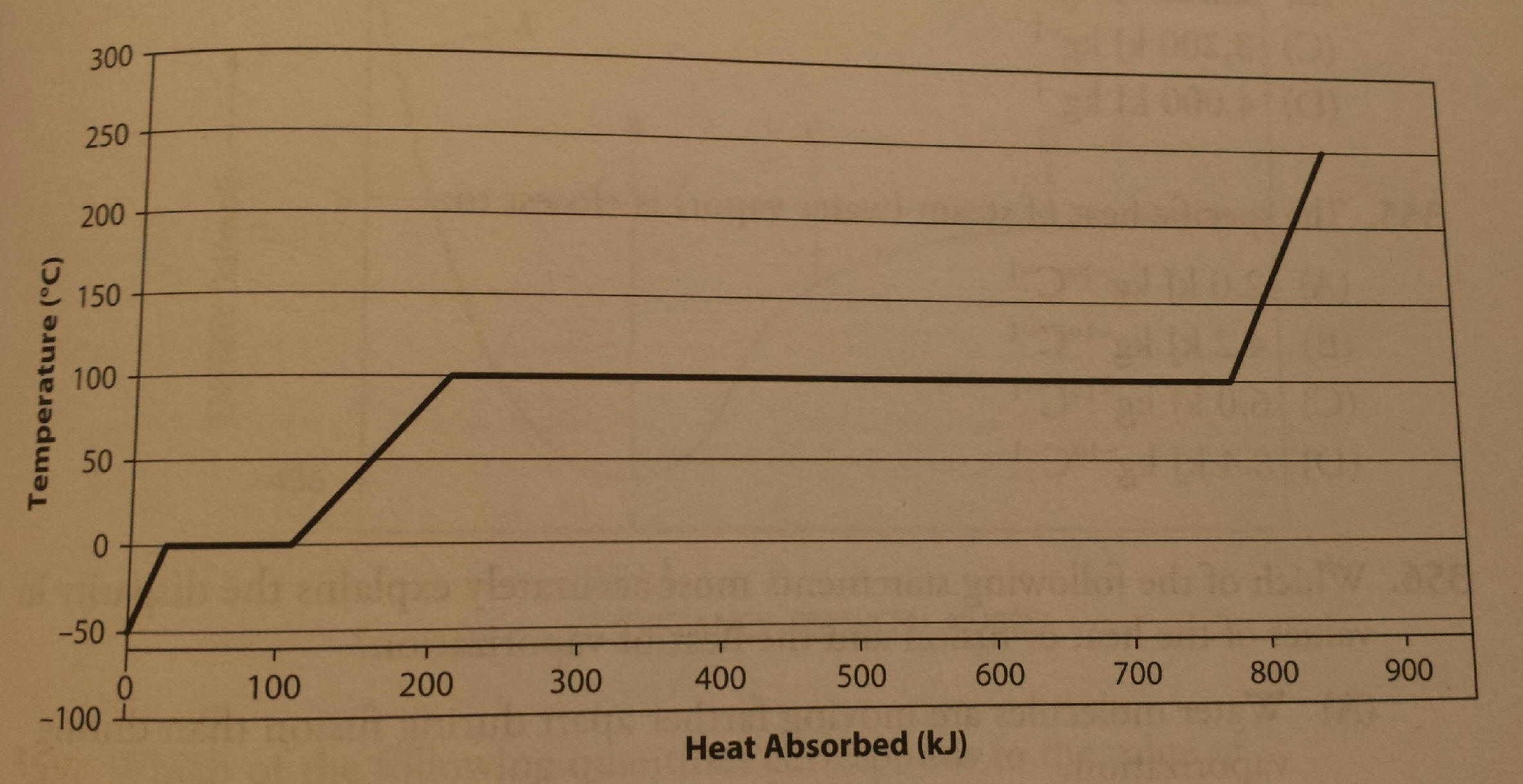
Journal Entry:

The sample of water requires the greatest
input of energy during
(A) the melting of ice at 0 oC
(B) the heating of water from 0 oC
to 100 oC
(C) the vaporization of water at 100 oC
(D) the heating of steam from 100 oC
to 250 oC
Learning Intentions
We will learn how to calculate enthalpy of heating or cooling processes and what constants to use in different stages of the process.
We will learn how to use representations and models to predict the sign and relative magnitude of the entropy change associated with chemical or physical processes.
We will learn how to predict whether or not a physical or chemical process is thermodynamically favored by determination of the signs of both ΔH and ΔS.
Closing Task:
You can solve enthalpy of phase change problems.
You can determine sign of ΔS and be able to explain your resoning.
Content Standards being covered:
Chemical system undergo three main processes that change their energy: heating/cooling, phase transitions, and chemical reactions. (E.K. 5.B.3.)
The net energy change during a reaction is the sum of the energy required to break bonds in the reactant molecules and the energy release in forming the bonds of the product molecules. The net change in energy may be positive for endothermic reactions where energy is required, or negative for exothermic reactions where energy is released. (E.K. 5.C.2)
Entropy is a measure of the dispersal of matter and energy. (E.K. 5.E.1)
Some physical or chemical processes involve both a decrease in the internal energy of the components under consideration and an increase in the entropy of those components. These processes are necessarily "thermodynamically favored".(E.K. 5.E.2)